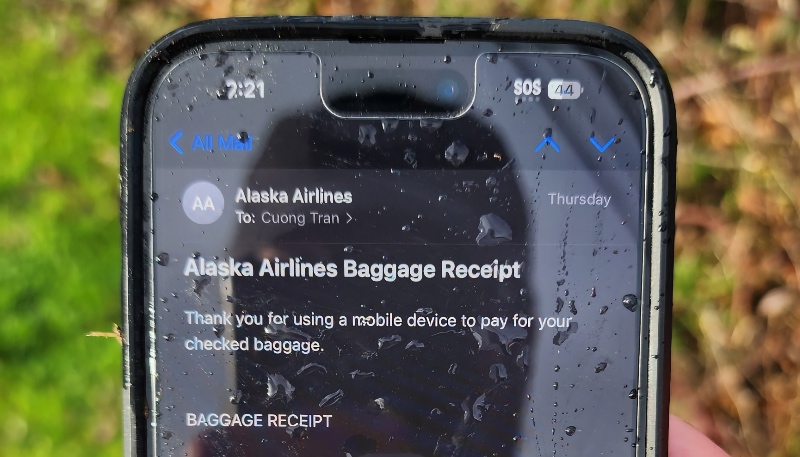Remember that iPhone was found intact and in working condition after it plunged 16,000 feet from an Alaska Airlines flight back in January? The iPhone 14 Pro Max was sucked out of Alaska Airlines flight 1282 when a door blew off of the jet a few minutes after take-off, causing a sudden decompression event.
The iPhone which had a case on it, fell 16,000 feet from the Alaska Airlines flight and landed on the grass.
Found an iPhone on the side of the road… Still in airplane mode with half a battery and open to a baggage claim for #AlaskaAirlines ASA1282 Survived a 16,000 foot drop perfectly in tact!
When I called it in, Zoe at @NTSB said it was the SECOND phone to be found. No door yet😅 pic.twitter.com/CObMikpuFd
— Seanathan Bates (@SeanSafyre) January 7, 2024
Seanathan Bates discovered the device on the side of the road. The device lacked a passcode or password, so Bates was able to open the device, which was still in Airplane Mode, and it opened to a receipt for Alaska Airlines baggage claim.
While you might expect any object falling from 16,000 feet to be nearly unrecognizable, this iPhone was actually in operable shape.
The Wall Street Journal’s Joanna Stern decided to investigate as to how the iPhone could survive the fall.
A series of drop tests were performed with an iPhone 14 and a Samsung Galaxy S23. One test involved dropping both devices from a height of 300 feet above the ground, without cases, onto a grassy area.
Both phones survived with “no real damage” other than collecting dirt and grass.
Stern asked multiple experts how the devices could have survived, resulting in an interesting science lesson for those of us who are unaware of something called “terminal velocity.”
Stern asked multiple experts how can an iPhone survive a drop from a 16,000-foot plunge from an airplane, but the screen breaks when you drop it three feet onto the bathroom floor.
“It doesn’t matter if you drop the phone from 300 feet up or from space,” said Mark Rober, a former NASA mechanical engineer turned YouTuber. “It’s going to be the same result because of something called terminal velocity.”
I called Rhett Allain, an associate professor of physics at Southeastern Louisiana University. He explained that, because of the mass, size and shape of a smartphone, it will increase in speed until it hits about 60 miles an hour. At that point, air resistance keeps it from getting any faster.
Allain told Stern that a height of 300 feet was enough for an iPhone or any other smartphone to reach what is called “terminal velocity.”
Both Rober and Allain told Stern that by landing in a grassy area, the iPhone’s landing was cushioned, allowing for slower deceleration. However, the device’s useful life would have been at an end had it landed on a sidewalk or asphalt road, which would have caused a much more abrupt deceleration (a “dead stop” I guess you could call it?).
Stern’s full video below is below and her full article is available on the WSJ’s website.


